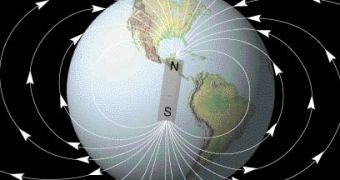Many people are beginning to realize that global warming is not going to go away by itself, as engines that burn gasoline emit pollutants, such as carbon dioxide, that cause global warming.
Moreover, fossil fuels that took millions of years to form are rapidly depleting and can't regenerate overnight. For example, U.S. vehicles consume 383 million gallons of gasoline a day, or about 140 billion gallons annually, around two-thirds of the total national oil consumption, half of which is imported from areas like the Middle East, Africa and Asia.
Recently, Alfred Y. Wong, professor of physics and director of the Plasma Physics Laboratory at the University of California, Los Angeles, elaborated a theory on how to get rid of carbon dioxide emissions. It may sound strange, but the professor is proposing that we dump the gases into space.
In theory, we could do that and Wong claims that a conveyor built in the Arctic could take advantage of the Earth's magnetic field to expel emissions into outer space. Being the only of the two places on the planet -along with Antarctica - above which the sky opens up to space, this region could be used as a launch pad for carbon dioxide.
The theoretical principles are sound, even if practically building such applications may not be feasible for the moment. Professor Wong stated that two factors could help us do that. Firstly, the fact that a certain number of carbon dioxide molecules invariably form negatively charged ions when they pair up with loose electrons in the atmosphere and, secondly, a constant vertical electrical field that makes negatively charged ions drift upward exists all over the planet.
It will take a while for the ions to reach the optimum altitude of 125 km, where the air is so rarefied, that they will be able to move freely and ride the magnetic field lines into outer space.
We would only need a device to artificially force the dioxide molecules into leaving the planet's atmosphere in larger numbers, which could be done by first ionizing more carbon dioxide molecules (one idea is to zap dust in the sky with lasers to release more electrons) and then guiding the resultant carbon dioxide ions to the appropriate altitude from which they could then drift into space through a series of natural processes.

 14 DAY TRIAL //
14 DAY TRIAL //